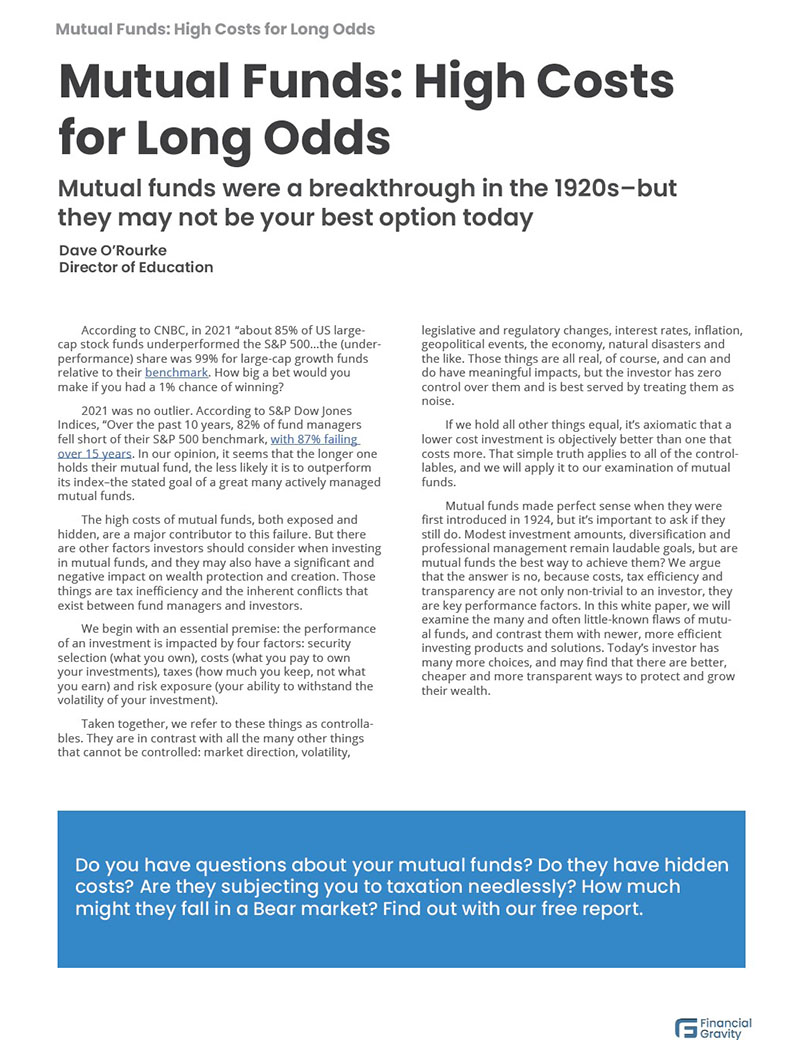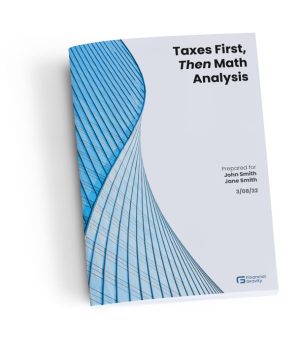Everyone has a plan until they’re hit in the mouth – Mike Tyson
Inflation has made daily life a challenge for most Americans, and especially so for those on fixed incomes. For workers, wages have had a hard time keeping up, but for retirees living on a pension, the costs of food, energy, and transportation have created real difficulties.
NerdWallet has a nifty inflation calculator, and it brings things home. Let’s say you bought something in 2014 for $100. If that same thing rose in price along with the CPI, it would cost you $132.72 this year. But get this; it would have cost you just $7.22 in 1924, ninety years earlier.
Inflation has a ratchet effect, for the most part: prices go up, but they don’t come back down. Between January 2020 and January 2024, the CPI rose 19.6%. Inflation has moderated recently, and last month rose 3.5% year-over-year. Today’s relatively high interest rates and the continuing issues with the supply chain, plus rising wages, make it unlikely that prices will roll back in any meaningful way.
Retirement readiness in America is a mess overall. Proof of this is the fact that nearly half of all Americans have no retirement savings at all. For many, living solely with Social Security income will be no picnic: the average monthly retirement benefit payment from Social Security is $1,907.
For a plurality of retired Americans, 40.2%, social security payments are their only source of income. Social security benefits have cost of living adjustments, or COLA, which are intended to help them maintain their lifestyle, but social security has massive problems with underfunding. If those problems don’t get fixed, there may be very tough times ahead for many. But inflation is just one of the threats that retirees face.
Retirement planning often fails for one or more of five reasons. Commonly used investment planning methodologies solve some of these five problems but not others. And keep this in mind: all five of these conditions may exist at the same time.
Timing
Investing for retirement at the wrong time in the stock market cycle can devastate your plan. As an example, if you are withdrawing a fixed amount of money from each of your investments on an annual basis, and your investments go down by 30%, you will deplete your principal at a potentially unsustainable rate and damage your plan’s viability.
A little math experiment may bring this point home: let’s say a retiree is currently withdrawing $40,000 per year from their $1M nest egg. That’s a 4% withdrawal rate, right? Seems safe enough. But if the market dipped 30% and their portfolio dropped to $700,000, $40,000 just became a 5.7% withdrawal rate—a number most, if not all, financial planners would deem unsustainable. Now, the client has a tough choice—take a big bite out of their nest egg or cut their income for that year from $40,000 to $28,000, which is 4% of $700,000.
Inflation
Inflation is the silent killer of retirement success. Many investors plan for retirement without considering inflation. Over a 20, 30, or even 40-year retirement, which is not unreasonable given the fact that Americans are living much longer, the effects of inflation can cut purchasing power in half, or even worse. While we can’t predict what inflation will be like in the future, we can remind investors that for the ten-year period of the 1970s, it averaged 7.8% per year and was 13.5% in 1980. It’s not the set amount of money the client needs every year that matters, it’s the goods and services—food, clothing, shelter, transportation, energy, and healthcare—that that money buys.
Longevity
Life expectancy in the U.S. has increased by about 10 years in just the last half-century. Revolutionary medical technologies such as biotech and genomics will likely create a much larger increase in life expectancy over the decades to come. Planning to spend down your money by age 80 just might miss the mark by 20 years or more. For example, in Summit County, Colorado, a person born today is predicted to have an average life expectancy of 98.9. Maybe this fact will bring it home: the CSO tables insurance carriers commonly use age 121 as the age when whole life policies will endow.
Risk Drift
Many investors plan the next 30 years of their lives based on the risk and return assumptions of their current investments. But, as people age they usually prefer safer, though lower-returning, investment portfolios. If appropriate changes in investors’ returns over time are not included in a plan, then the plan might look good now but be more likely to fail in the future. Most would agree that 80% in stocks with a 30-year time horizon is sensible, but how many would take on that kind of risk with only a five-year horizon? It seems to us inevitable that investors will become shy about risk as they get older, yet traditional retirement income planning solutions too often do nothing to solve this problem.
The Human Element
Deeply rooted in our primitive psyche is the fight-or-flight response. Humans developed this acute stress response in order to survive. Unfortunately, our proclivity to protect against hazards, often by running away, makes humans genetically unsuited for investing. When markets get scary, our instincts tell us to sell. Fight-or-flight causes scared investors to sell at the wrong times.
Warren Buffet, arguably the world’s greatest investor, advised, “Be fearful when others are greedy and greedy when others are fearful.” Unfortunately, most investors succumb to their primal instincts and fail by doing exactly the opposite.
Investors and their advisors have spent decades trying to solve the challenges of income planning for retirees. Like so much of the industry’s output, we observe that the solutions proposed always seem to focus either on the purely rational or on the emotional, but not both. To a great degree, this reflects the divide between retail and institutional investors.
Two common retirement planning methods are (1) systematic withdrawal planning and (2) bucket planning.
Systematic Withdrawal Planning
Systematic withdrawals are an alternative to owning dividend and interest-paying securities to provide income. Analysis has shown that income may be derived instead from any growth-oriented, liquid investment simply by liquidating and withdrawing those investments periodically. Systematic withdrawal planning starts by determining two key variables: the investor’s risk tolerance and how much income they want to withdraw from their savings and investments every year.
The investor then determines whether the investments are able to support this income requirement. The “4% rule” is a common methodology—often referred to as a “back of the envelope” calculation—if the percentage of investments required per year is less than 4% of the corpus, the investments should be able to support the desired income. If the investor is very conservative or has a large nest egg, then rather than 4%, 3% might be used as a guide.
But, the systematic withdrawal methodology can fail the investor if the stock market declines shortly after the plan is initiated because investors might have to sell stocks when they are cheap to create income, thus quickly depleting the portfolio. In addition, investors are often unable to stick to the plan during down markets, as they are not certain of the investments’ ability to provide the income they require.
Systematic planning may work well for a computer system and can be better than owning low-yielding bonds and dividend-paying stocks, but in our experience, it offers little support to the human being involved.
Bucket Planning
Bucket planning also starts by determining how much money the investor wants from the investments—of course, it does; that is the variable every income plan solves for.
The concept of bucket planning is to break down future cash flow needs into discrete time segments. Each time segment is referred to as a bucket, and each bucket is typically intended to hold five years’ worth of income needs. A major weakness in this approach is that bucket planning typically does not re-optimize the client’s risk allocations as time progresses but rather sticks to the original plan, simply spending down the money in each bucket one after the other and doing so in reverse order of riskiness.
Bucket planning may fail as a lifetime income program because it typically does not adjust which investments to use for spending during normal versus down markets. In other words, it is specifically not time-optimized.
Both bucket planning and systematic withdrawals address some of the retirement income puzzle, but only the recently developed Time Optimized Planning™ (TOP) approach solves all of the five principal reasons that retirement plans fail. Let’s review:
Because systematic withdrawals and bucket planning allow for principal at-risk investments, they may be said to reduce inflation risk, just as TOP does.
Tim Optimized Planning is designed to avoid the age-old problem of selling low. Rather than simply spending down assets in reverse order of their riskiness, meaning spending cash equivalents, then bonds, and finally stocks, TOP seeks to provide income from assets that have performed best in each period. If the market is up in a given year, income is derived from stocks. If the market is down or still recovering, less volatile investments are used. TOP is to be rerun every year, and when the market is fully recovered and growing, money is moved back into less volatile securities to reposition the portfolio for the next decline.
Systematic withdrawals and bucket planning may be fairly categorized as set-it-and-forget-it plans, and on the surface, that may appear to be appealing. TOP requires the investor to monitor and potentially rebalance the portfolio annually. We believe the extra work required by TOP is more than justified by its potential financial and psychological benefits to retirees.
Systematic withdrawals may avoid retirement timing risks if the withdrawals are taken as sell rebalances: less or none will be withdrawn from stocks and more from cash and bonds during down markets, and similarly, more will be taken from the risky assets during up market moves. This is something bucket planning does not do and is not intended to do, which is a big reason why we feel bucket planning is deeply flawed.
Time Optimized Planning is engineered specifically to buttress the client against retirement timing risk—the risk that the stock market will experience a significant drop early in the income years.
Bucket planning, however, may be useful in dealing with the human element by focusing the client on the need for lifetime income and by deferring the time until risky assets are needed.
Because TOP can be reoptimized every year, taking into account changing situations, life events, and market events, longevity risks are reduced. This is not the case with systematic withdrawals; in fact, longevity risk may be the most serious flaw with systematic withdrawals.
Investors taking a fixed amount of money every year may simply spend all of the money before they die; clients taking a set percentage may see the number of dollars they receive shrink to the point where costs are not covered. Both are failures of the planning process and, in our view, of the planner.
There is a question about how well bucket planning deals with longevity risks because it lacks the flexibility to take profits to provide income during up markets, relentlessly spending down principal protected assets until they are depleted, and leaving the retiree in the uncertain position of invading principal during down markets, and doing so when the client is entering the final phase of their income needs. You can see the potential for a double whammy: a serious decline in account value when there is too little time for a recovery, and it’s easy, if pretty awful, to imagine the impact on the emotions of the retirees.
Finally, accounting for risk drift is a major feature of TOP, which is designed specifically to respond to the realities of human aging. TOP is intended to reduce risk in income-generating investments to near zero in the last several years of the client’s life. This also has the powerful benefit of negating the client’s fight-or-flight instincts during bad market events. Neither bucket planning nor systematic withdrawals solve that problem and may often exacerbate it.
There is another safety net built into TOP. Many investors don’t want to spend all their money on themselves, preferring to leave a legacy to loved ones or charity. TOP segregates this money into a separate account. The implication of this is some additional safety cushion for the investor. This end-of-plan goal money is typically invested in principal at-risk investments because it is intended for a much longer-lived individual and, therefore, should have a longer-term, more risk-loving orientation. Although the client doesn’t intend to spend this money, it can provide additional peace of mind that they do have the wherewithal in the event it should be needed.
If you are concerned about your security in retirement or concerned that your existing financial plan may not account for the various threats that may exist, we can provide you with a customized Incomize™ retirement income report.
Set-it-and-forget-it approaches may appeal to clients who don’t like to think about the future and what it may bring, but Incomize can offer something more and better: true peace of mind.









